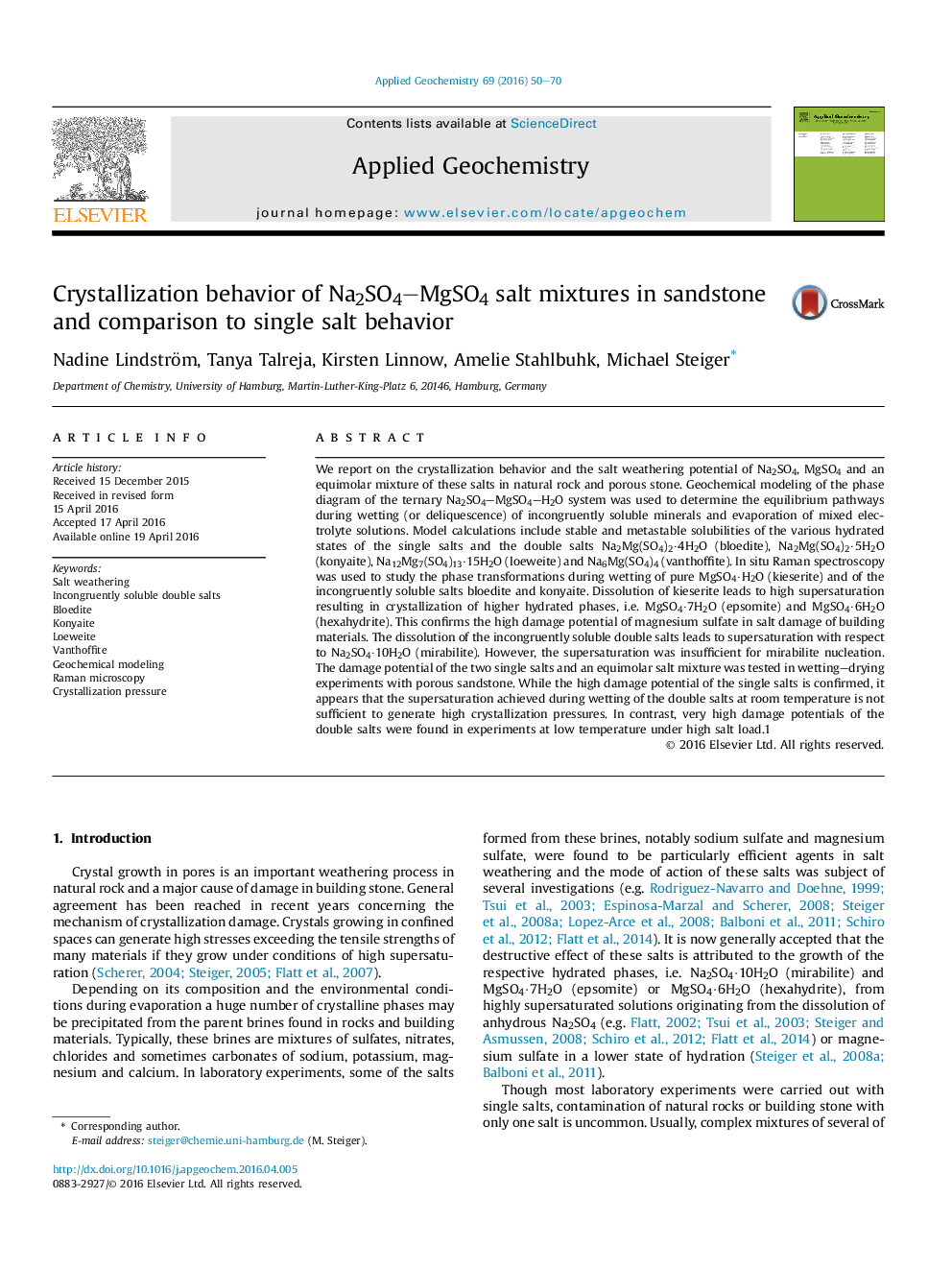| Article ID | Journal | Published Year | Pages | File Type |
|---|---|---|---|---|
| 4435580 | Applied Geochemistry | 2016 | 21 Pages |
•Investigation of the damage potential of incongruently soluble double salts in the Na2SO4–MgSO4–H2O system.•Geochemical modeling of the phase diagram Na2SO4–MgSO4–H2O.•Investigation of phase changes during wetting of kieserite, konyaite and bloedite.•Raman reference spectra of solid phases in the Na2SO4–MgSO4–H2O system.•Crystallization experiments with sandstone impregnated with pure salts and salt mixtures.
We report on the crystallization behavior and the salt weathering potential of Na2SO4, MgSO4 and an equimolar mixture of these salts in natural rock and porous stone. Geochemical modeling of the phase diagram of the ternary Na2SO4–MgSO4–H2O system was used to determine the equilibrium pathways during wetting (or deliquescence) of incongruently soluble minerals and evaporation of mixed electrolyte solutions. Model calculations include stable and metastable solubilities of the various hydrated states of the single salts and the double salts Na2Mg(SO4)2·4H2O (bloedite), Na2Mg(SO4)2·5H2O (konyaite), Na12Mg7(SO4)13·15H2O (loeweite) and Na6Mg(SO4)4 (vanthoffite). In situ Raman spectroscopy was used to study the phase transformations during wetting of pure MgSO4·H2O (kieserite) and of the incongruently soluble salts bloedite and konyaite. Dissolution of kieserite leads to high supersaturation resulting in crystallization of higher hydrated phases, i.e. MgSO4·7H2O (epsomite) and MgSO4·6H2O (hexahydrite). This confirms the high damage potential of magnesium sulfate in salt damage of building materials. The dissolution of the incongruently soluble double salts leads to supersaturation with respect to Na2SO4·10H2O (mirabilite). However, the supersaturation was insufficient for mirabilite nucleation. The damage potential of the two single salts and an equimolar salt mixture was tested in wetting–drying experiments with porous sandstone. While the high damage potential of the single salts is confirmed, it appears that the supersaturation achieved during wetting of the double salts at room temperature is not sufficient to generate high crystallization pressures. In contrast, very high damage potentials of the double salts were found in experiments at low temperature under high salt load.1
